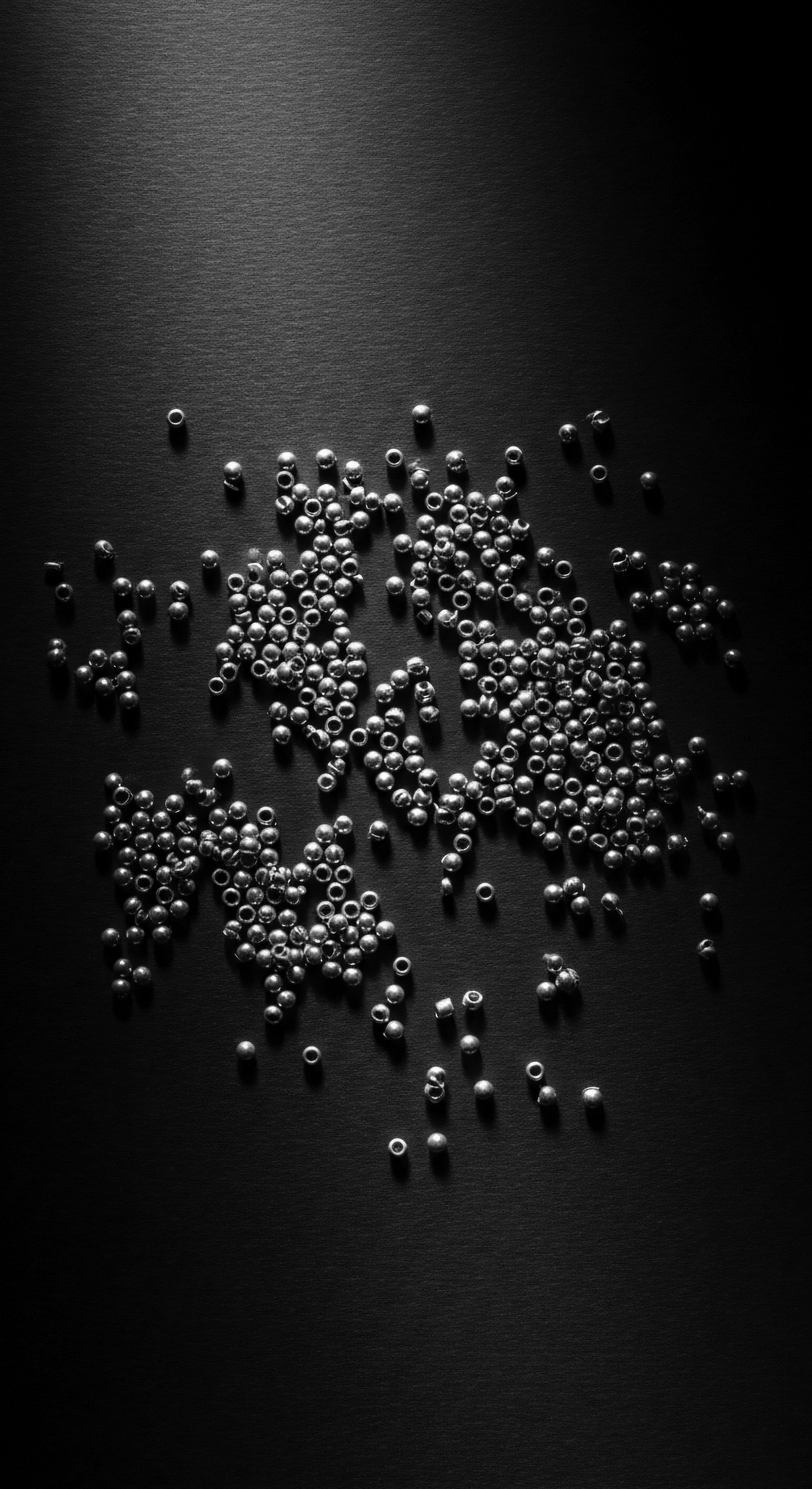
Fundamentals
The outermost layer of each individual hair strand, known as the hair cuticle, serves as a natural shield, guarding the inner cortex from external elements. Imagine a shingled roof, where each shingle, or Cuticle Cell, overlaps the next in a downward-facing pattern. This microscopic arrangement is crucial for hair’s well-being and appearance. When these cells lie flat and smooth, they create a reflective surface, imparting a healthy sheen.
This arrangement also helps to seal moisture within the hair fiber. The hair cuticle, in essence, regulates the hair’s interaction with water, products, and environmental stressors.
The structural integrity of the hair cuticle directly affects how hair feels, how it looks, and its resilience to everyday styling. A robust cuticle means less friction between strands, allowing for smoother combing and styling. When this protective layer becomes compromised, through mechanical damage or environmental exposure, the overlapping cells can lift, creating a rougher surface.
This raised cuticle layer can cause hair to appear dull, feel coarse, and become susceptible to further damage, leading to issues like frizz and breakage. Understanding this foundational protective element is a step toward understanding how to care for hair, especially textured hair, which often possesses unique cuticular characteristics.
The hair cuticle, much like a carefully laid roof, provides essential protection and allows hair to maintain its vitality and appearance.
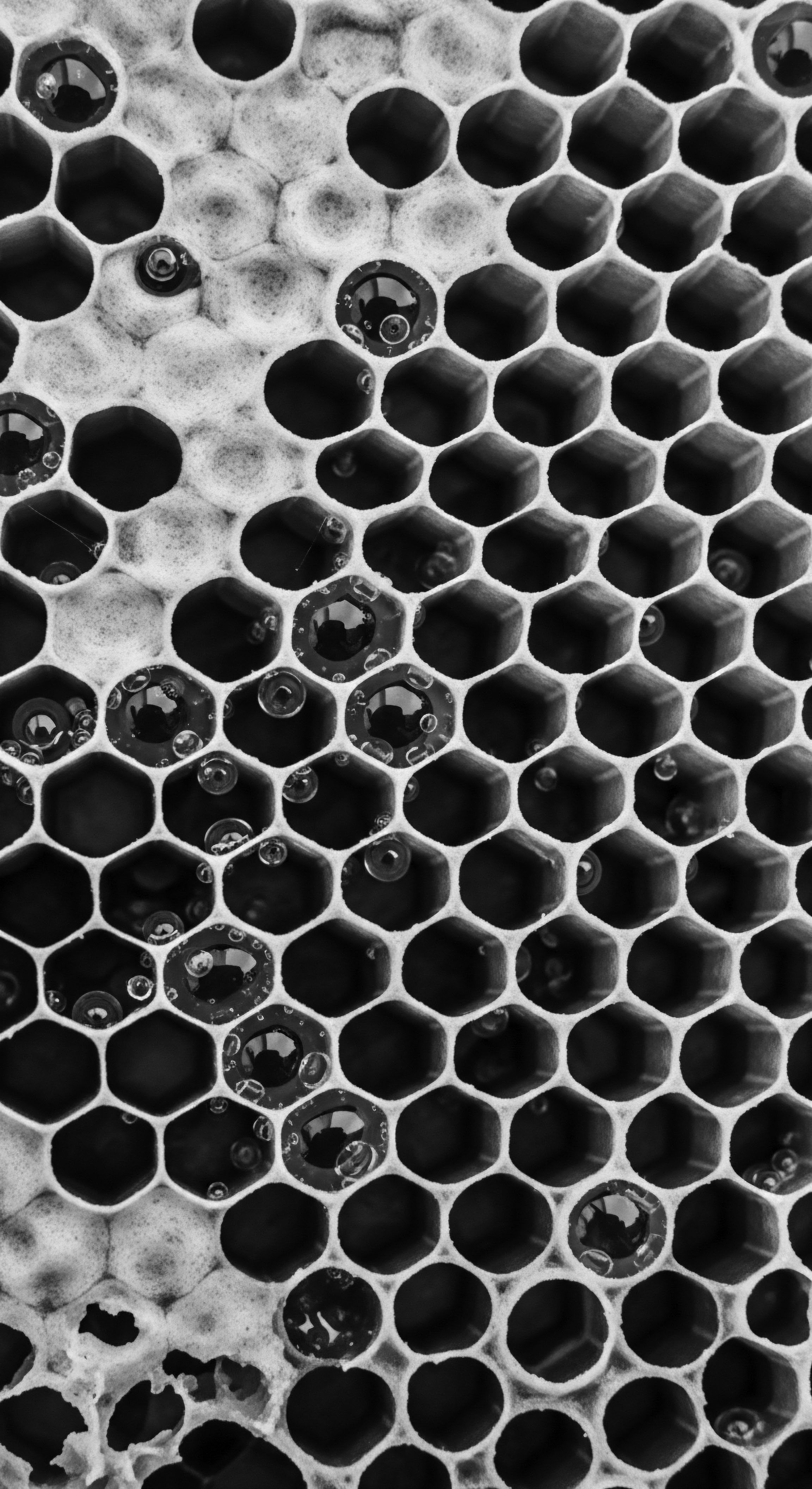
Basic Characteristics of the Hair Cuticle
The hair cuticle consists of several layers of dead, flattened cells that overlap in a precise manner. These cells are rich in keratin, a fibrous protein also found in nails and skin. The arrangement of these cells determines the hair’s porosity, a key indicator of its ability to absorb and retain moisture.
- Overlapping Cells ❉ Each cuticle cell typically extends from the root towards the tip, with the free edge pointing away from the scalp. This imbricated structure, reminiscent of fish scales, provides the initial barrier against environmental damage.
- Keratin Composition ❉ The cells are composed primarily of hard keratin, offering structural strength and protection. This protein framework helps to maintain the hair’s shape and integrity against physical and chemical forces.
- Protective Function ❉ The cuticle shields the inner cortex, which contains the hair’s pigment and primary structural components. Without an intact cuticle, the cortex would be vulnerable, leading to rapid moisture loss and increased susceptibility to damage.
- Role in Hair Porosity ❉ The tightness of the cuticle layers directly influences how easily water and conditioning agents can enter or exit the hair shaft. Hair with tightly bound cuticles exhibits low porosity, resisting moisture entry, while hair with raised cuticles shows high porosity, readily absorbing but also quickly releasing moisture.
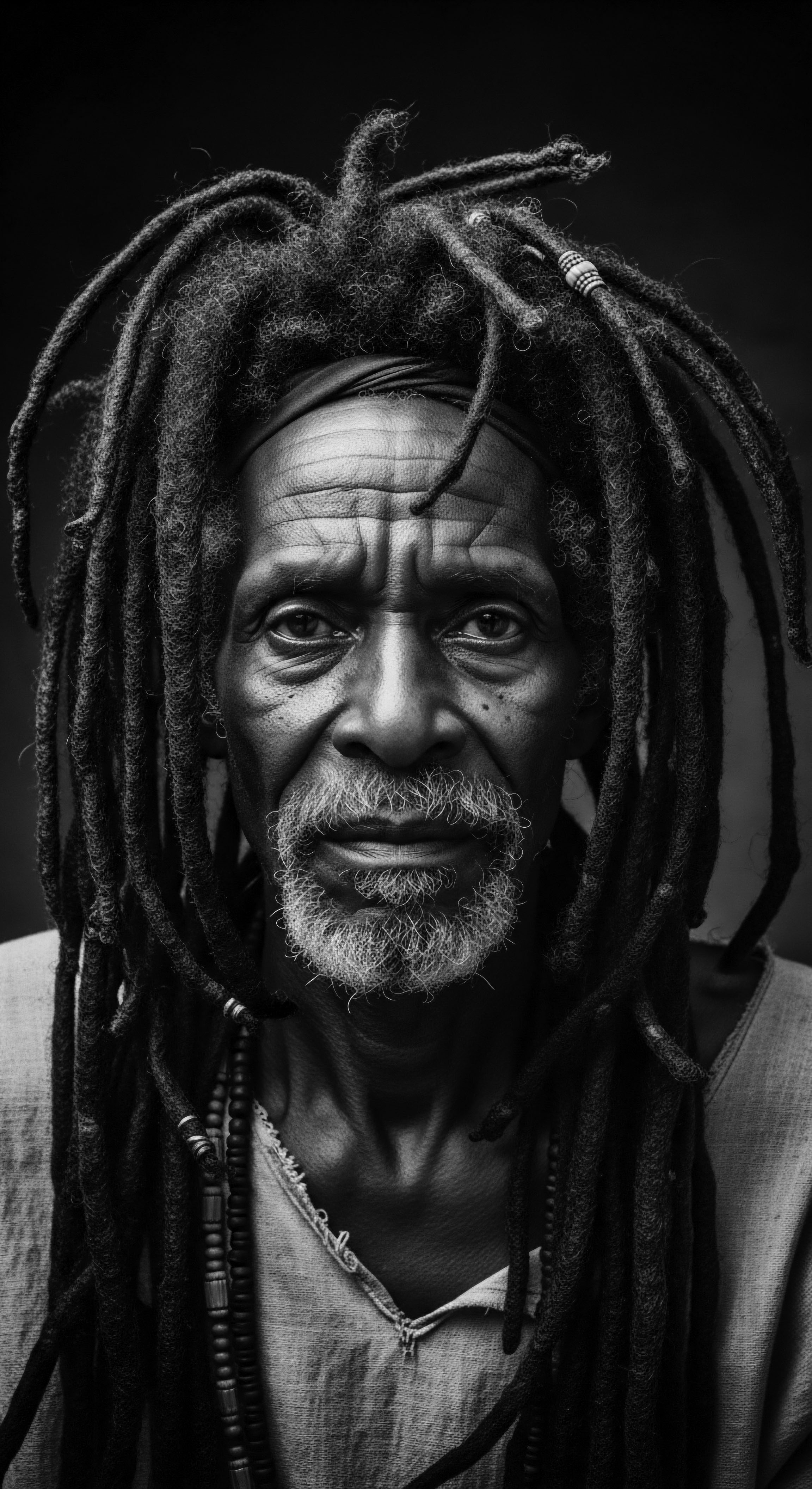
First Encounters with Hair Care and the Cuticle
From ancient times, communities recognized the outward signs of hair health, even without the microscopic understanding of the cuticle. They observed hair’s response to natural elements and traditional preparations, instinctively engaging in practices that, unbeknownst to them, preserved cuticular integrity. The application of plant-based oils and balms, for instance, created a smoothing effect that mimicked the function of a well-sealed cuticle, reflecting sunlight and reducing tangles. Early hair care was a lived science, based on observation and generational transmission of knowledge, recognizing the protective needs of hair long before modern scientific inquiry.
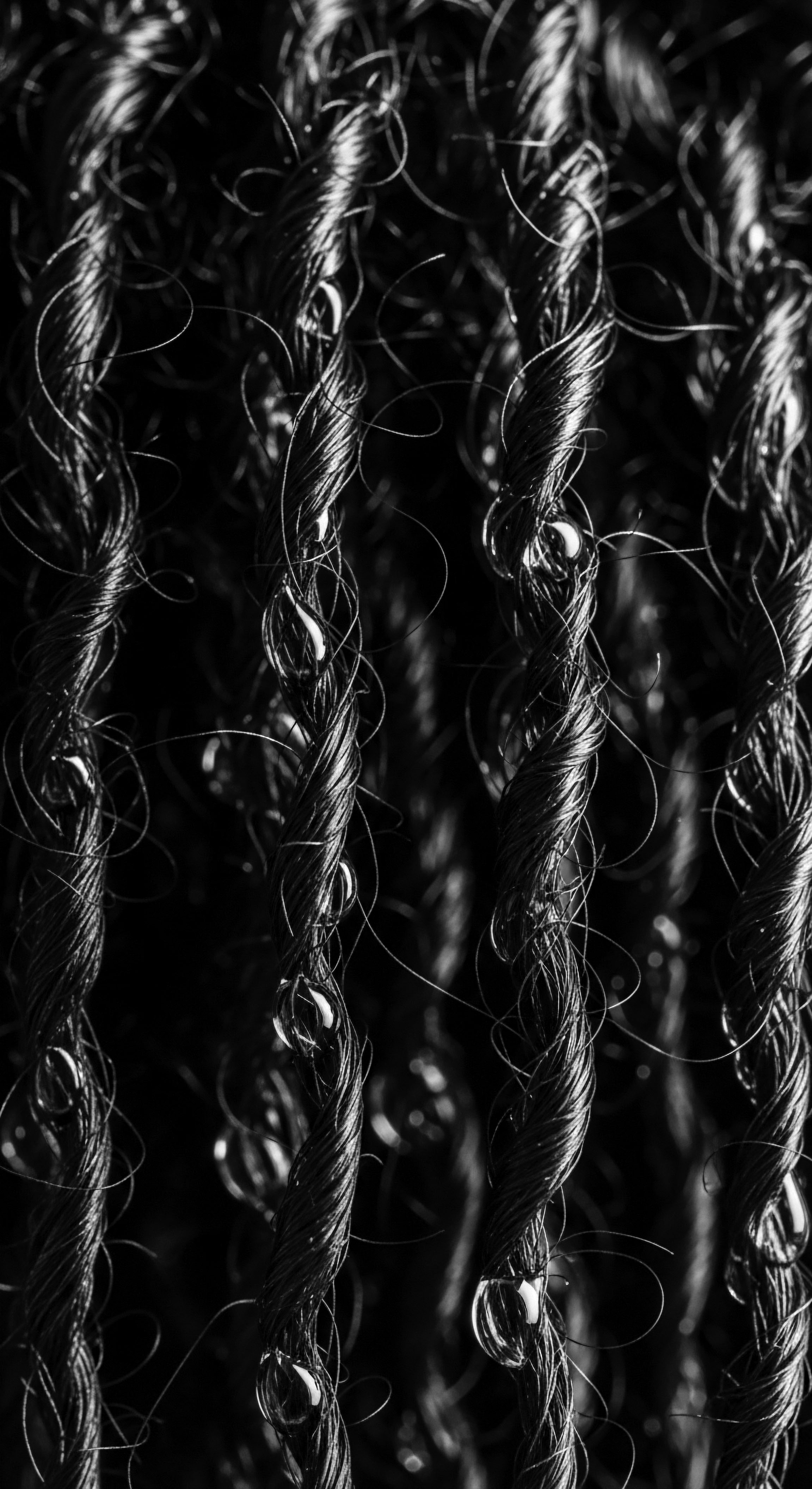
Intermediate
Moving beyond its elemental definition, the hair cuticle represents a dynamic interface, constantly interacting with its surroundings. This interaction shapes not only the hair’s immediate condition but also its journey through various stages of life and care. The health of this outermost layer is paramount for hair’s overall resilience, dictating its response to moisture, its vulnerability to stress, and its capacity to retain the very substances that nourish it. For individuals with textured hair, this layer holds particular significance, often presenting a unique set of considerations born from the hair’s natural helical shape and ancestral care practices.
The intricate structure of textured hair, with its bends and curves, naturally creates points along the fiber where the cuticles may be more prone to lifting. This inherent characteristic, a consequence of the hair’s elliptical cross-section, can lead to increased porosity. Understanding this natural predisposition allows for a more attuned approach to care, one that acknowledges and works with the hair’s inherent design. The ancestral wisdom of hydrating and sealing textured hair, passed down through generations, directly addresses these cuticular considerations, offering protection and moisture retention that modern science now validates.
The hair cuticle functions as a gatekeeper, determining the flow of moisture and nourishment into and out of the hair strand.
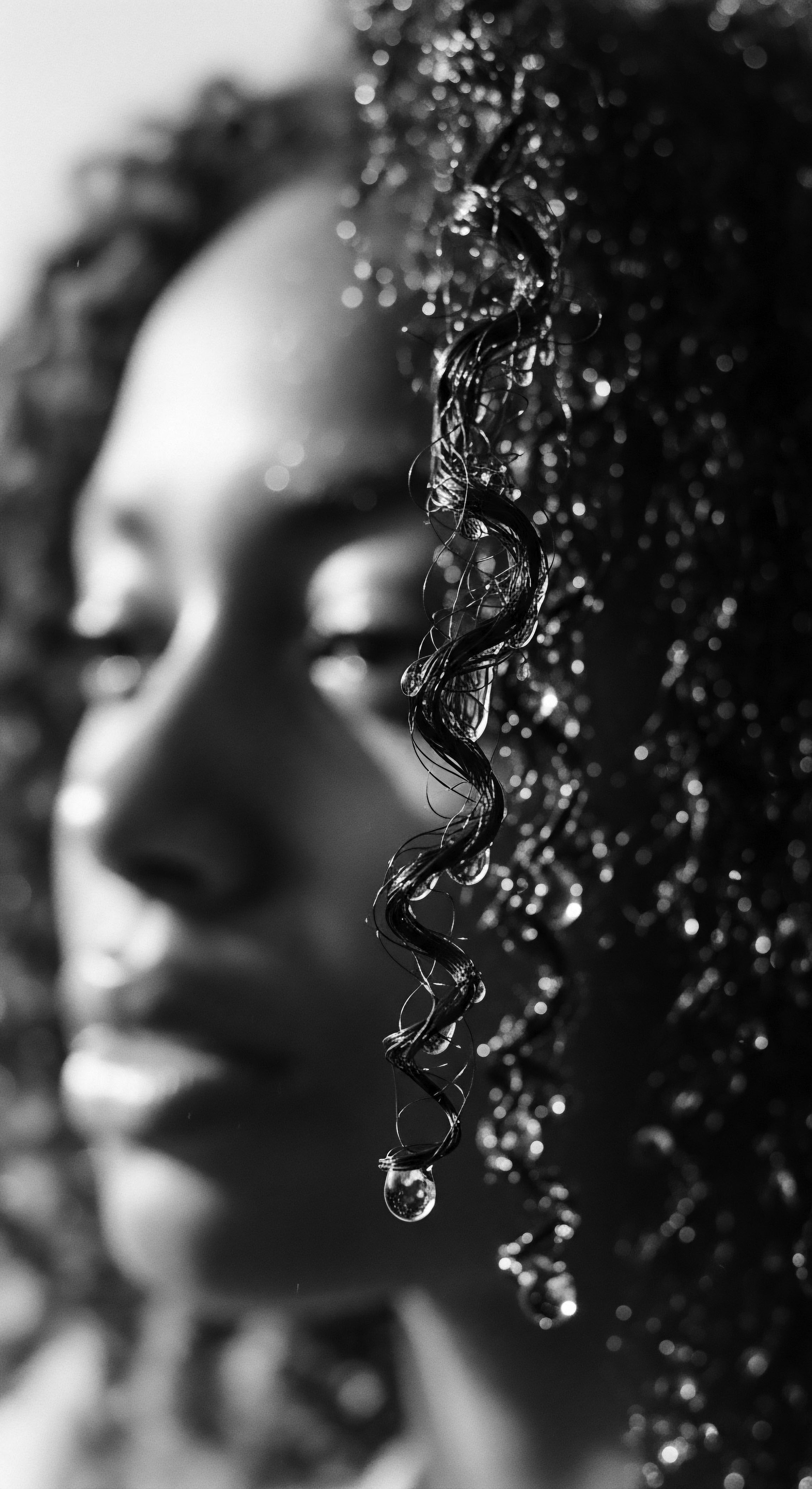
The Porosity Spectrum and Textured Hair
Hair porosity is not a static state but a spectrum, with the cuticle’s condition at its core. It describes how well hair absorbs and holds onto moisture. For textured hair, often categorized as wavy, curly, or coily, the cuticle’s orientation and the hair’s inherent bends play a significant role in its porosity.
- Low Porosity ❉ Here, the cuticle layers lie tightly flat, often making it challenging for moisture to enter. Products tend to sit on the surface, and hair may take longer to wet and dry. Ancestral methods often involved warming oils or gentle steaming to encourage the cuticle to accept nourishment.
- Normal Porosity ❉ This represents a balanced state where the cuticle is slightly raised, allowing for good absorption and retention of moisture. Hair with normal porosity typically responds well to most products and styling techniques.
- High Porosity ❉ In this instance, the cuticle layers are often more open or lifted, either genetically or due to damage. Hair with high porosity readily absorbs water but also releases it quickly, leading to dryness and frizz. This characteristic is often observed in tightly coiled hair types due to the natural twists and turns of the hair shaft.
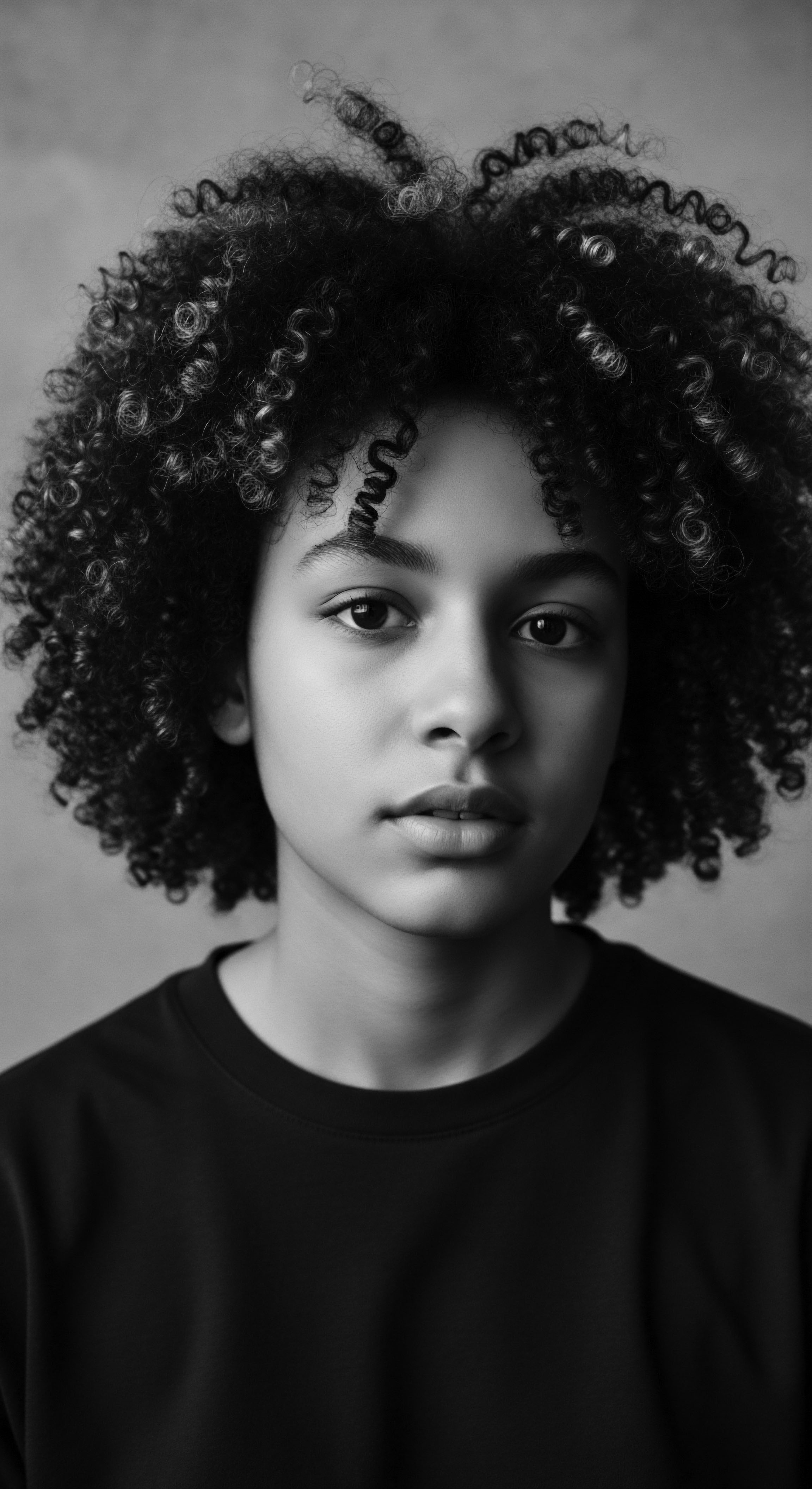
Environmental Impact and Care Strategies
Beyond inherent structural differences, external factors significantly influence the cuticle’s integrity. Sun exposure, harsh chemicals, excessive heat styling, and even vigorous combing can cause the cuticle to lift, chip, or break. When this occurs, the hair loses its protective barrier, becoming vulnerable to dehydration and damage.
Care strategies, whether traditional or contemporary, revolve around preserving this delicate outer layer. The historical reliance on natural emollients and protective styling, seen across many diasporic communities, serves as a testament to an intuitive understanding of cuticular needs. These practices aimed to coat the hair, provide slip for detangling, and mitigate environmental exposure.
Consider the use of shea butter and Coconut Oil, deeply rooted in African and Caribbean care traditions. Shea butter, sourced from the nuts of the African shea tree, provides conditioning and moisture to hair, particularly coiled types. Coconut oil, present in many tropical regions, can assist in repairing and protecting damaged hair, and also softens strands.
These natural emollients, used for generations, create a protective sheath that helps seal the cuticle, preventing moisture loss and providing a barrier against environmental elements. Such applications, passed down through familial lines, are profound demonstrations of how inherited knowledge has historically safeguarded hair’s vitality.
| Care Modality Moisture Sealing |
| Ancestral Practice Application of plant oils and butters (e.g. shea, coconut, moringa). |
| Contemporary Link to Cuticle Health These emollients create a hydrophobic layer, sealing cuticles and preventing transepidermal water loss. |
| Care Modality Gentle Cleansing |
| Ancestral Practice Use of natural saponins (e.g. African Black Soap, reetha). |
| Contemporary Link to Cuticle Health Non-stripping cleansers prevent excessive cuticle lifting, maintaining barrier function. |
| Care Modality Protective Styling |
| Ancestral Practice Braids, twists, wraps, and locs in various forms. |
| Contemporary Link to Cuticle Health Reduces mechanical manipulation and environmental exposure, thereby preserving cuticle integrity. |
| Care Modality Conditioning |
| Ancestral Practice Rinses with mucilaginous plants (e.g. hibiscus, aloe vera). |
| Contemporary Link to Cuticle Health Polysaccharides and other compounds in these plants coat the cuticle, providing slip and smoothing. |
| Care Modality These parallels highlight a continuous wisdom concerning the preservation of hair's outer layer across time. |
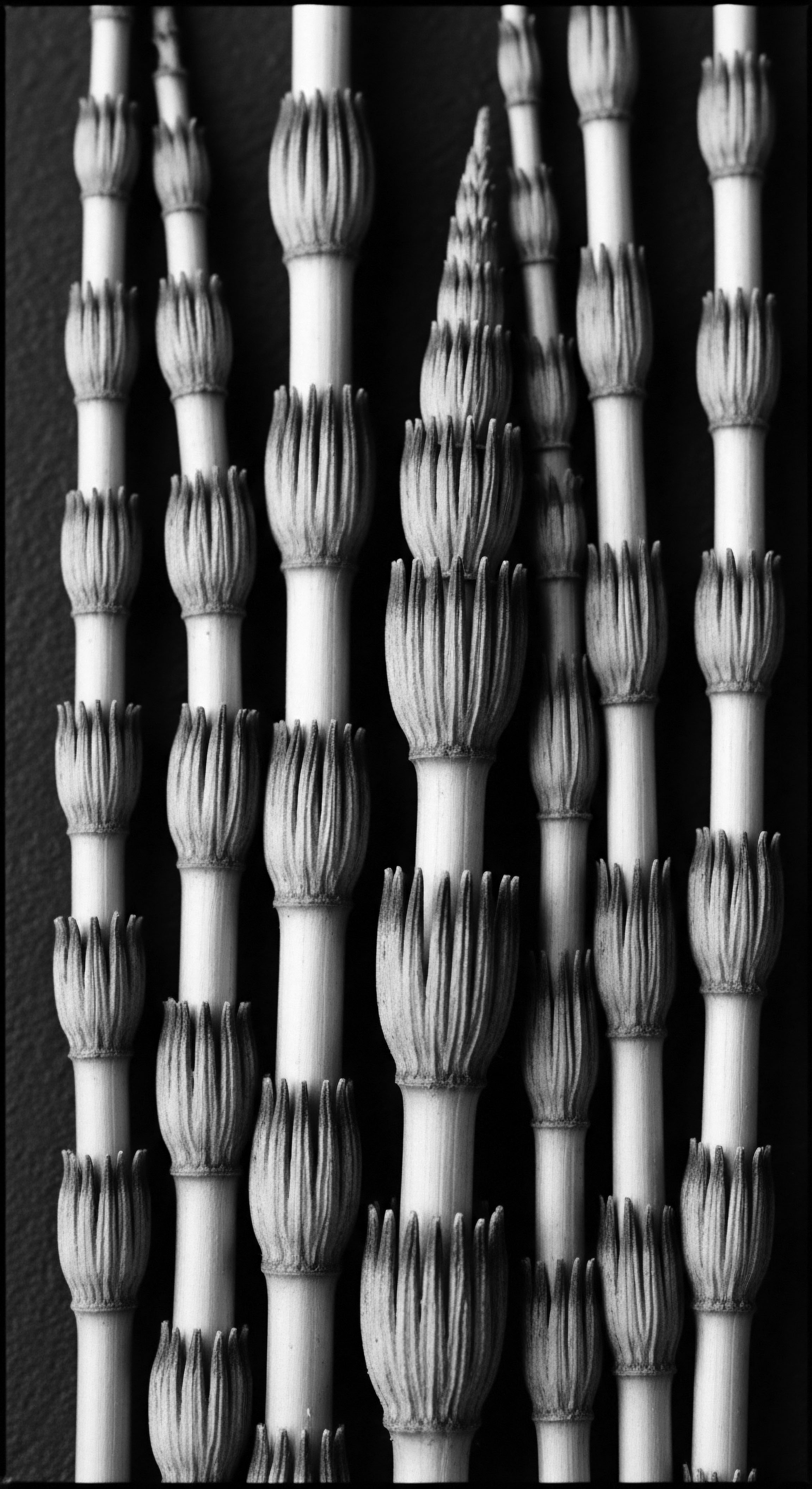
Academic
The hair cuticle, from an academic standpoint, signifies far more than a mere surface; it represents a highly organized biological composite, functioning as the primary determinant of hair’s physiochemical properties and its interactive relationship with its external environment. Its anatomical delineation as a series of overlapping, flattened, dead cells, rich in cysteine-rich keratin proteins, provides the foundational understanding for its mechanical and permeability characteristics. This architectural marvel, specifically its cellular arrangement and the lipid layer adorning its surface, orchestrates the hair’s response to hydration, chemical processes, and physical forces. The profound impact of cuticular health on hair’s luster, tactile qualities, and structural resilience compels rigorous scientific inquiry.
Within the specialized context of textured hair, the morphological variations of the hair shaft itself introduce intrinsic complexities to cuticular arrangement. The elliptical cross-section and pronounced helical turns typical of highly coiled hair create unique topographical challenges, leading to areas of natural cuticle lift and exposure. This inherent structural predisposition, as a direct consequence of its configuration, renders coiled hair more susceptible to mechanical damage and moisture egress, thereby positioning the cuticle as a focal point for studies concerning hair hydration dynamics and breakage mitigation.
The cuticular layer, a complex protein shield, governs hair’s essential interactions with its environment and its inherent response to care.

Morphological Nuances and Mechanical Properties
The distinct mechanical properties of textured hair are intimately tied to the conformation of its cuticle. While straight hair exhibits a more uniform cuticle overlap, the curvilinear path of coiled hair leads to points where the cuticle edges naturally protrude. This phenomenon, often termed Cuticle Lifting at the curves, accounts for the perception of dryness and increased tangling often associated with highly textured strands. The precise angle of the cuticle cells and their degree of imbrication vary across different hair types, influencing factors such as coefficient of friction and moisture vapor transmission.
Advanced microscopy, including scanning electron microscopy, has provided high-resolution depictions of these cuticular irregularities, revealing the micro-topographical landscape of various hair fibers. Such investigations confirm that the structural torsion within coiled hair places persistent mechanical stress on the cuticle, leading to its predisposition for fracture or disruption. This scientific elucidation of textured hair’s cuticular architecture offers a biological basis for the longstanding observations concerning its particular needs for moisture retention and gentler handling.
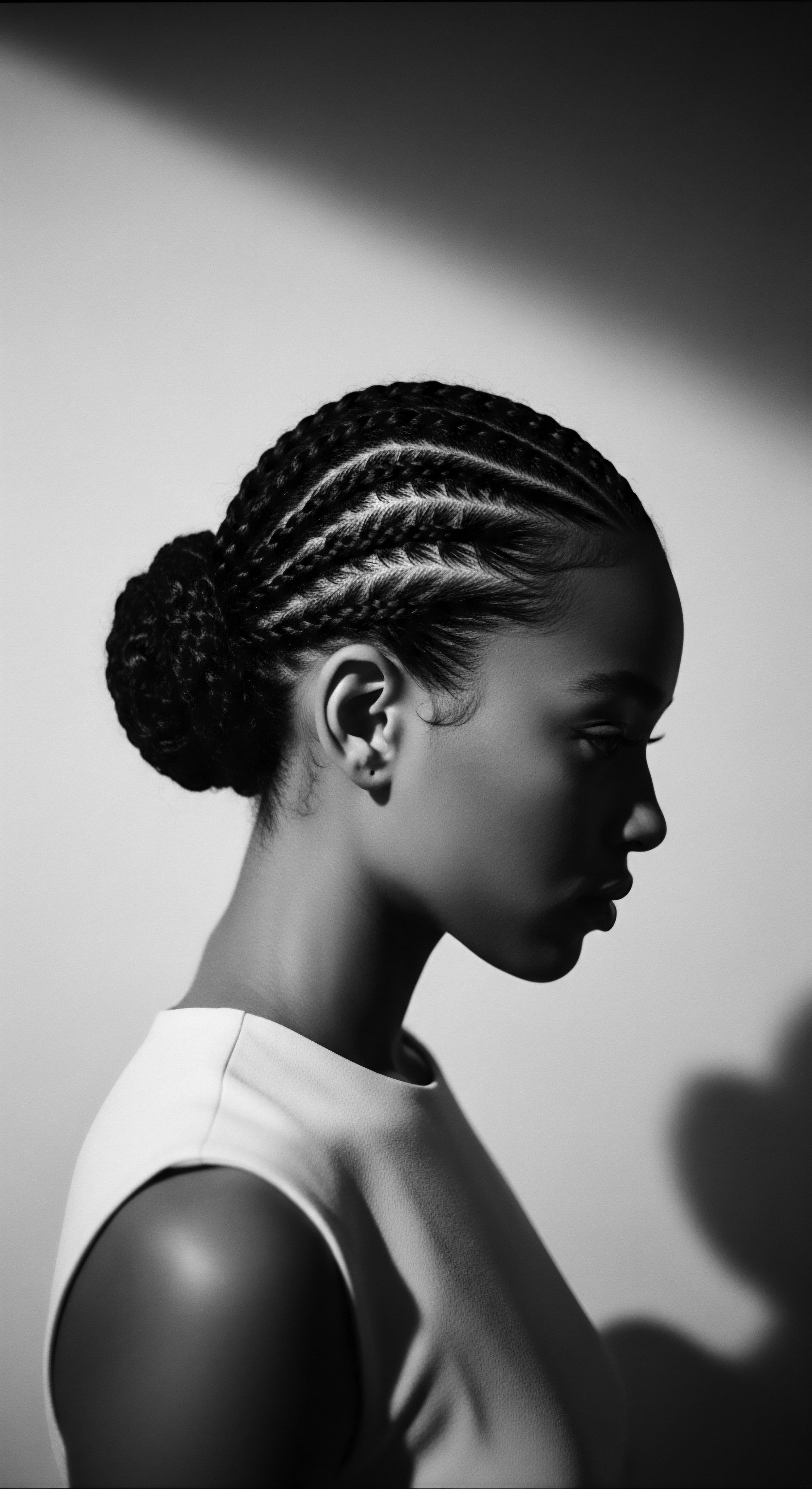
Investigating Cuticular Response to Hydration
Hair porosity, defined by the cuticle’s receptivity to moisture, is a critical parameter in understanding hair’s behavior. High porosity, frequently observed in textured hair types, signifies a compromised or naturally open cuticle layer. This open structure permits rapid absorption of water, yet simultaneously allows for equally rapid dehydration. The scientific literature often addresses this dual characteristic ❉
- Water Absorption Kinetics ❉ Studies on hair porosity utilize techniques like gravimetric analysis to quantify the rate and extent of water absorption by hair fibers. Highly porous hair, with its raised cuticles, exhibits accelerated water uptake compared to low porosity hair where cuticle layers are tightly sealed.
- Moisture Retention Dynamics ❉ Despite rapid absorption, high porosity hair struggles with moisture retention, a direct consequence of the open cuticular pathway. This necessitates the use of emollients that create a substantive barrier on the hair surface, effectively ‘sealing’ the cuticle to prevent moisture evaporation.
- Protein Loss Susceptibility ❉ A damaged or highly lifted cuticle can also lead to increased protein loss from the inner cortex during washing or chemical processing, further compromising hair’s structural integrity. This underscores the cuticle’s role as a vital protective barrier.
The emphasis on ‘sealing’ practices within traditional care systems finds a direct correlation in modern scientific understanding of cuticular function. Substances rich in fatty acids or film-forming polymers create a hydrophobic layer, mimicking the natural lipid barrier of an intact cuticle, thus minimizing water loss.
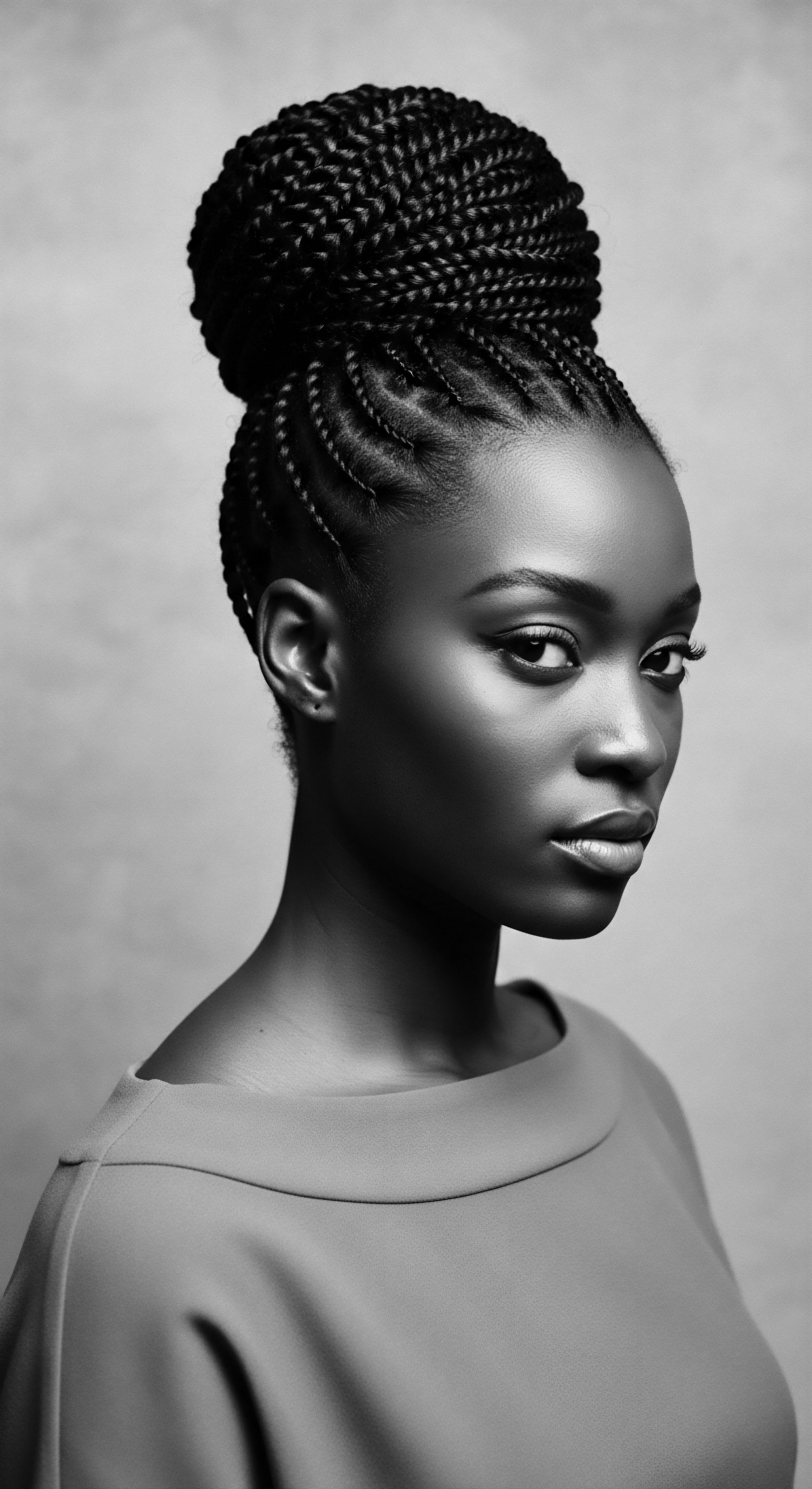
Historical and Cultural Implications of Cuticular Understanding
The scientific comprehension of the hair cuticle, while a relatively recent development, provides a validating lens through which to appreciate ancestral hair care practices. For millennia, various cultures across the African diaspora cultivated sophisticated knowledge systems around hair, often without explicit anatomical understanding, but with profound practical wisdom. These traditions, born of necessity and deep observational experience, were inherently designed to manage the unique characteristics of textured hair, including its cuticular behavior.
During the traumatic periods of the Transatlantic Slave Trade, the intentional dehumanization of enslaved Africans often began with the forceful shaving of their heads. This act severed a profound connection to identity, status, and spiritual belief, as hair in many West African cultures was considered a conduit to the divine and a symbol of lineage. Despite this brutal disruption, resilience manifested in the adaptation and preservation of hair care knowledge.
Enslaved Africans, stripped of familiar tools and traditional ingredients, innovated with whatever was available, sometimes using substances like pig fat or axle grease for grooming. This enduring spirit of care, even under duress, speaks volumes about the intrinsic value placed upon hair and its connection to self-worth.
Consider the historical application of various plant-derived mucilages in traditional African hair care, a practice that directly addresses cuticular needs. While modern science identifies mucilage as a polysaccharide, a complex carbohydrate that forms a slimy, gel-like substance when hydrated, ancestral communities intuitively understood its benefits. These plant extracts, obtained from sources such as Okra, Aloe Vera, and Flaxseed, were valued for their ability to provide ‘slip’ for detangling and to impart a conditioning effect. For example, the use of okra in various African diasporic communities for hair cleansing and conditioning, an anecdotal yet historically persistent practice, aligns with mucilage’s scientific capacity to coat the hair shaft, effectively smoothing the cuticle and reducing friction between strands.
This ancestral innovation provided a natural, effective method for managing hair prone to tangles and dryness, precisely because the mucilaginous compounds formed a film that helped flatten the slightly raised cuticles of highly textured hair. This deep-seated knowledge, transmitted through generations, represents a remarkable example of empirical wisdom that predates and, in many ways, parallels contemporary scientific understanding of hair surface chemistry.
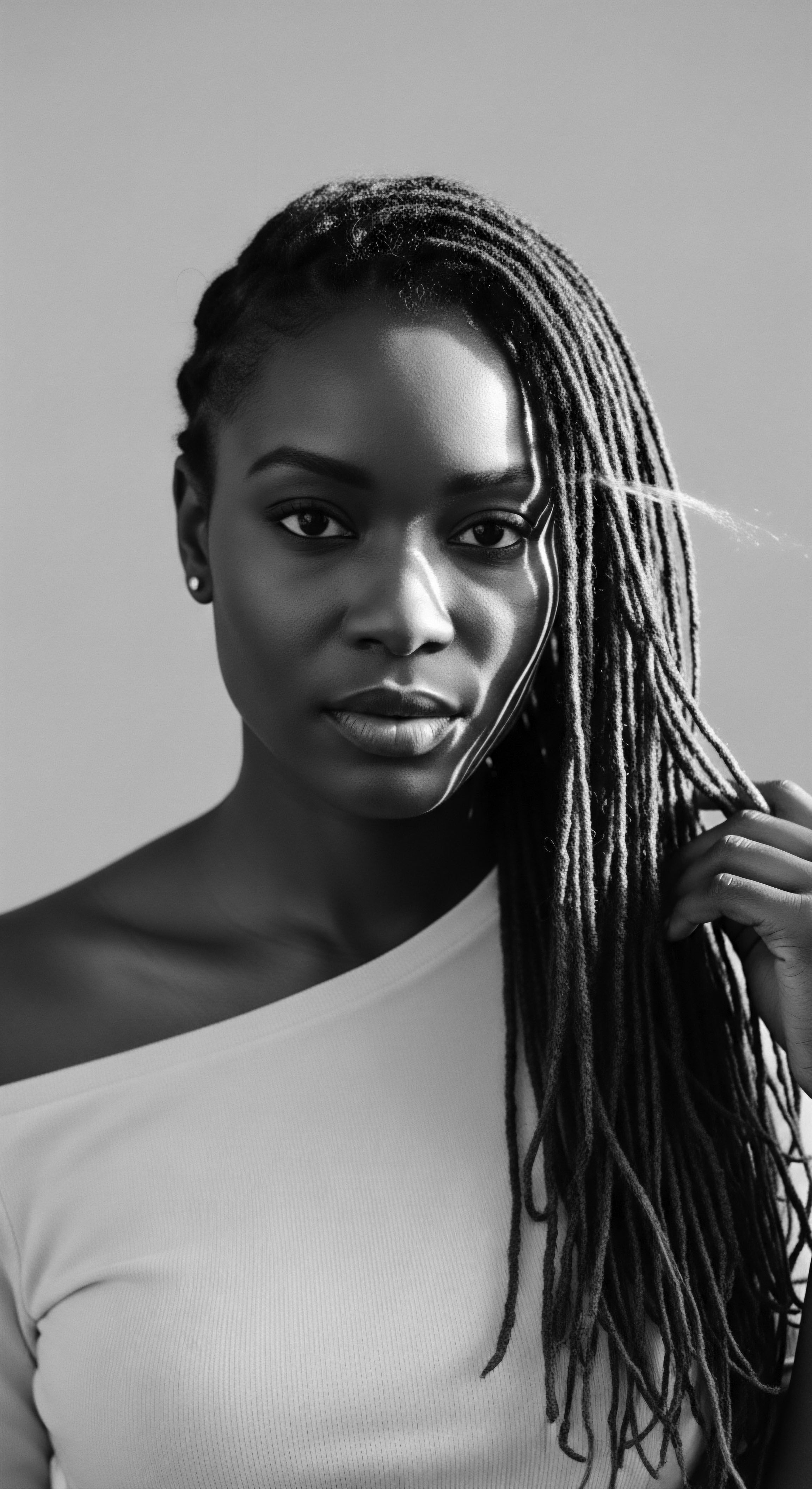
The Evolution of Hair Care Technologies and Ancestral Wisdom
The history of hair care is a continuous dialogue between inherited wisdom and emerging technologies. In pre-colonial African societies, hair care was a communal ritual, a sacred practice signifying social status, age, marital state, and spiritual beliefs. Expert hair groomers held esteemed positions, meticulously crafting styles that communicated complex messages within their communities. The tools were simple ❉ combs carved from wood or bone, and natural adornments like beads and cowrie shells.
The shift toward chemical straighteners in the diaspora, particularly in the 20th century, stemmed from societal pressures to conform to Eurocentric beauty standards. These powerful formulations, often lye-based, dramatically altered the hair’s internal structure by breaking disulfide bonds and forcibly flattening the cuticle. While achieving a desired aesthetic, these processes frequently led to extensive damage, leaving the cuticle severely compromised and the hair vulnerable.
The recent resurgence of the natural hair movement marks a conscious return to practices that honor innate texture and prioritize cuticular health, often drawing inspiration from the very ancestral methods that were once marginalized. This movement reflects a desire for authenticity and holistic wellness, acknowledging the profound connection between hair, identity, and inherited legacies.
| Era/Context Pre-Colonial Africa |
| Tool/Practice Indigenous Combs (wood, bone, ivory) |
| Connection to Cuticle Management Designed for gentle detangling, minimizing cuticle abrasion on tightly coiled hair. |
| Era/Context Diaspora (Slavery Era) |
| Tool/Practice Makeshift Implements (e.g. repurposed tools, natural elements) |
| Connection to Cuticle Management Adaptation for basic grooming and detangling, reflecting resilience in maintaining hair despite limited resources. |
| Era/Context Late 19th/Early 20th Century |
| Tool/Practice Hot Combs/Pressing Oils |
| Connection to Cuticle Management Applied heat and oil to temporarily flatten cuticle layers for a straightened appearance. |
| Era/Context Mid-20th Century onwards |
| Tool/Practice Chemical Relaxers |
| Connection to Cuticle Management Chemically alter hair structure, flattening cuticles, but often causing irreversible damage. |
| Era/Context Modern Natural Hair Movement |
| Tool/Practice Finger Detangling, Wide-Tooth Combs, Conditioning Agents |
| Connection to Cuticle Management Focus on minimizing mechanical stress, smoothing and sealing the cuticle to retain moisture and health. |
| Era/Context These tools and practices reveal an ongoing, evolving relationship with hair's outer layer, shaped by cultural shifts and scientific understanding. |
The understanding of cuticular function has moved beyond purely aesthetic concerns to encompass broader issues of hair health, cultural identity, and even social justice. The modern haircare landscape, while influenced by scientific advancements, increasingly recognizes the wisdom embedded in historical practices. The call for clean beauty and the embrace of natural ingredients often echo the very substances and methods that have nourished hair for centuries across African and diasporic communities. This represents not a mere trend, but a conscious acknowledgment of the hair cuticle’s central role in hair’s journey from its ancient origins to its contemporary expressions of identity.

Reflection on the Heritage of Hair Cuticles
The hair cuticle, in its profound simplicity and complex structure, serves as a testament to the enduring spirit of textured hair and its heritage. It is a biological marker, a whispered story of adaptation, and a tangible link to the practices and perseverance of those who came before us. From the sun-drenched landscapes of ancestral lands, where hair was revered as a living crown, to the quiet resilience of the diaspora, where care was an act of defiance and connection, the cuticle has borne witness to every twist and turn of this journey.
The wisdom of elders who intuitively understood how to soothe and protect hair, using the bounty of the earth—oils, clays, and mucilaginous plants—was, at its heart, a profound interaction with the hair cuticle. They understood that a sealed, well-tended strand held moisture, reflected light, and stood strong against the elements, even without the language of science to define it. Their practices were not just about aesthetics; they were about honor, about identity, and about preserving a piece of self that societal forces relentlessly tried to erase. The legacy of these practices continues to resonate, informing a contemporary resurgence of reverence for innate hair textures.
Today, as we gaze upon a single strand, its cuticle reveals not just its biological blueprint, but a rich genealogy of care. It speaks of hands that braided, oils that softened, and traditions that endured. The hair cuticle, therefore, is not merely a scientific concept; it is a repository of ancestral knowledge, a living archive of heritage, and a continuous invitation to nurture and celebrate the intrinsic beauty of textured hair. In honoring this delicate outer layer, we honor a legacy that stretches across continents and centuries, affirming the soul of a strand and the unbreakable spirit it carries.
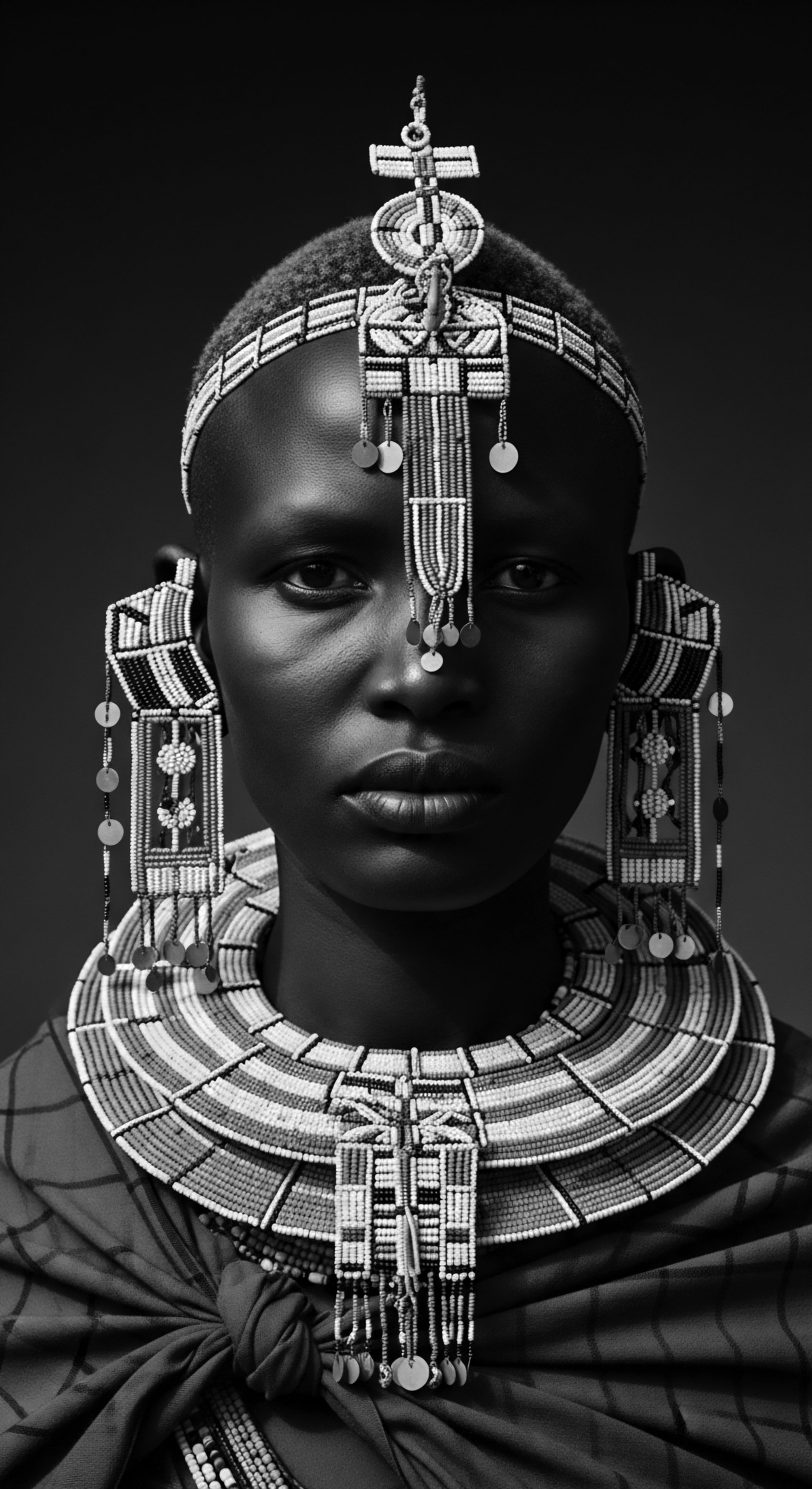
References
- Byrd, A. D. & Tharps, L. D. (2014). Hair Story ❉ Untangling the Roots of Black Hair in America. St. Martin’s Griffin.
- Sieber, A. D. & Herreman, F. (2000). Hair in African Art and Culture. The Museum for African Art.
- Randle, S. M. (2015). The Black Hair Handbook ❉ A Guide to the Art of Natural Hair. CreateSpace Independent Publishing Platform.
- Thomas, A. (2013). The History of Black Hair ❉ Style and Status Through the Ages. Black Dog & Leventhal Publishers.
- White, S. & White, J. (1995). Stylin’ ❉ African American Expressive Culture from Its Beginnings to the Zoot Suit. Cornell University Press.
- Verma, R. S. et al. (2016). Traditional Uses of Indian Medicinal Plants in Hair Care Cosmetics ❉ A Short Review. ResearchGate.
- McCreesh, S. (2011). Ancient Egyptian Hair Gel. University of Manchester Press.
- Sangeethapriya, M. & Siddhuraju, P. (2014). Preparation and characterization of emulsion products from quince seed mucilage. Food Hydrocolloids.
- Jouki, M. et al. (2014). Emulsifying and foaming properties of mucilage from Zizyphus mauritiana fruit. Food Hydrocolloids.
- Chebe Hair. (2025, January 13). Traditional African Secrets For Long And Healthy Hair. Africa Imports.
- Abbott, K. (2020, November 11). An Overview on Hair Porosity. NYSCC.
- Noma Sana. (2024, October 30). The History of Straightening Afro Hair ❉ Culture, Trends & Identity. Noma Sana.
